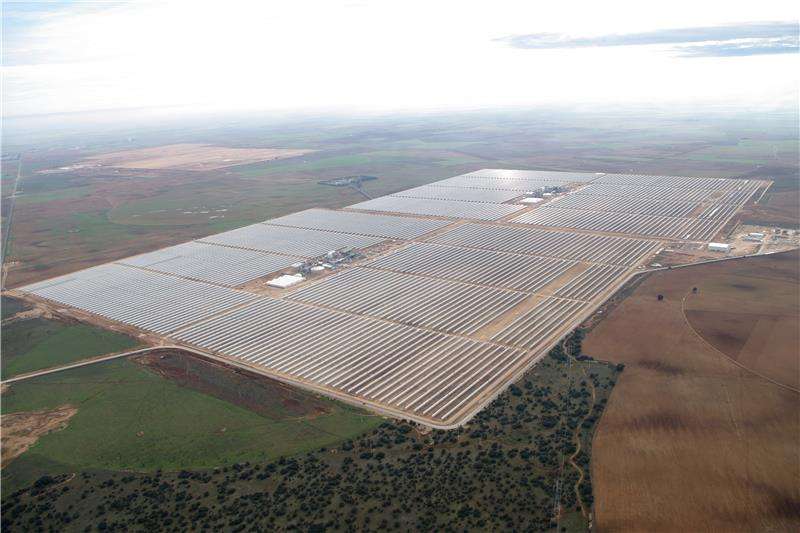Technical, economical and environmental advantages of energy hybridization

The project HYSOL is entering into the demonstration stage in order to see the technical, economical and environmental advantages of using a hybridization of solar power with fossil and renewable fuels.
Concentrating Solar Power (CSP), both parabolic trough and solar tower technologies, is a clean and sustainable technology that permits electricity to be generated from solar radiation. In these plants, the elevated temperatures needed to move the vapor cycle does not require the combustion of fossil fuels or a nuclear reaction in order to activate the electric generator. In its place, solar radiation is concentrated by a series of parabolic trough collectors or heliostats. Despite these economical and environmental advantages that could be expected using free and renewable resource such as solar radiation, the reality is that the commercial development depending on the maturity of this technology, cost reduction and difficulty in managing the electrical generation according to its demand.
These problems are being resolved as the CSP technology incorporates thermal storage systems and the possibility to hybridize with other auxiliary fuels, mainly natural gas. The hybridization suffers from an important problem since the efficiency of the transformation of auxiliary fuels in electricity in a simple cycle is limited and is normally much inferior to what can be achieved in larger plants or in combined cycle centres.
The HYSOL project aims to use a commercial level of a new form of solar hybrid plants with high efficiency. The fuel used to hybridize can have fossil (natural gas) or renewable (biogas, biomethane, synthesis gas) origins that permit a broad number of localizations and reduce the carbon footprint. This way an optimal management of the electrical production, dispatchable and firmness, with an elevated efficiency of conversion can be achieved, which results in a better economic and environmental process.
The HYSOL project, financed by the European Commission and lead by the Spanish business ACS-Cobra, is entering the demonstration stage where it hopes to show an experimental level of technical, economical and environmental advantages of the solar integration with other energetic sources. Throughout 2015 the new system for recuperating heat that allows the integration of CSP technology with other renewable energy sources will be put in place at the cluster of innovation of Manchasol Solar Power Plant (Ciudad Real, Spain - Owned by ACS/Cobra). This project, that has a budget surpassing 9.2 million Euros, also counts on the participation of new partners from four European cities, including the Solar Platform of Almeria (Plataforma Solar de Almeria, PSA-CIEMAT, España), the Universidad Politécnica de Madrid (UPM, España), ENEA (Italy), IDIE (Spain), AITESA (Spain), Danmarks Tekniske Universitet (Denmark), SDLO-PRI (Holand) y AUNERGY THERMOSOLAR (Spain)
The whole energy market and particularly the countries that have an elevated solar resource in particular expectedly await the new generation of CSP plants that are capable of competing with conventional technology that generates renewable and sustainable electricity. Spain and the United States are leaders in developing technologies and commercially implementing this technology, even though there are 19 countries that count on commercial instillations and CSP demonstrations. In particular, it is important to note that the inauguration of new projects in countries who have an enormous economical and energy potential are China, India, Australia, Arab Emirates, Morocco, Chile, Israel and South Africa.
Provided by Universidad Politécnica de Madrid

















